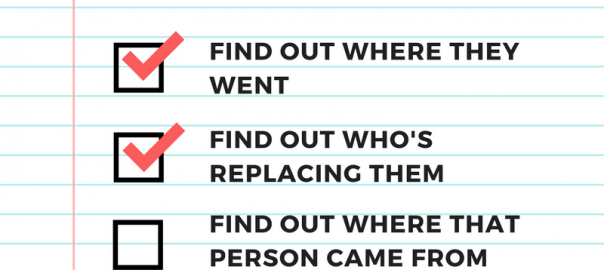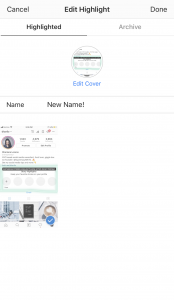— May 24, 2018
It’s inevitable.
You send an email to a seeming prospect. Something like this:
Hey Jane,
Still considering changing platforms? We just came out with some solid content, based on research, that I thought you’d enjoy.
Love to hear your feedback.
Talk again soon,
John
Jane isn’t a cold email lead.
She’s interacted with you and the timing wasn’t right when you first reached out. But she’s solidly in your funnel and churning through the buying cycle — maybe even above your average cycle time.
Then, things change.
You get an email from one of the following:
- Jane’s supervisor
- A direct report
- Or the worst, a colleague that has nothing to do with what you sell.
They say something like this:
Hi John,
I regret to inform you that Jane has taken a position elsewhere and no longer works with us.
Best,
Somebody Else
While we all like to think that we’d take the news like a champ. Don’t lie — you’d react a little differently;

If you’ve been selling for a year or two, this scenario has likely happened. And depending on how many leads you have to generate, it could be happening to you a lot.
Here’s why.
2016 research shows that people leave their jobs after an average of 4.2 years. So, for every 100 leads you put in your funnel, 20-25 will likely leave within 12 months.
It gets worse before it gets better (but it’s going to get better :).
If you’re selling an expensive product or software, the buying cycle can be a year or more. Which means that people who may have otherwise bought (you know, for the brand they are currently at) — may not even be there when a deal could be made.

Obviously, that’s the bad news of this post.
Now, How to Find Prospects that Leave Jobs
In school, we’re taught that every action has an equal and opposite reaction.
In the case of leads leaving the current company you’re trying to close, it’s a bit more complicated than that (in a good way).
Here’s what I mean.
- When someone leaves a company, that company (typically) hires a replacement.
- The replacement (in the case of most decision maker roles) is someone who is experienced (i.e. they came from somewhere doing something similar).
- Your lead that left went somewhere else (likely to do something similar to what they were doing at your current target brand).
Many of you see where I’m going. If not, keep reading, it’ll be clear in a minute.
People changing roles could seem like some simple HR inevitabilities. But if you look closely, one (seemingly) lost lead — just magically turned into three potential quality contacts.

If you’re having trouble, here’s a visual to help.
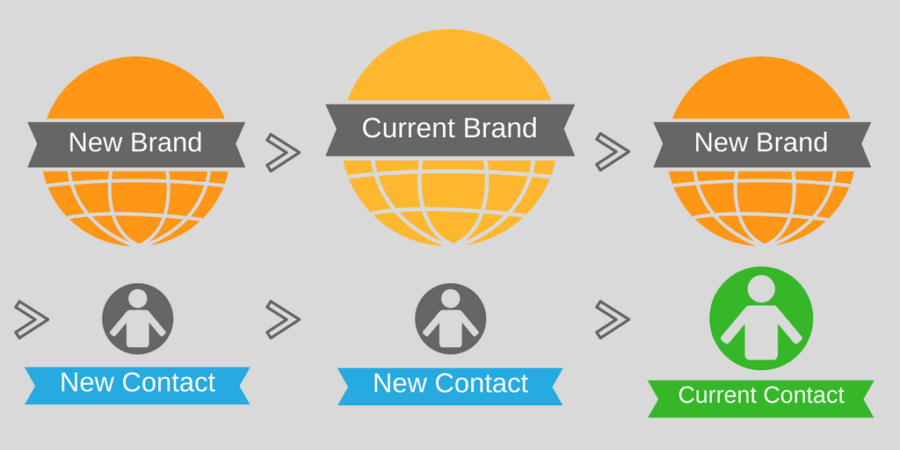
Now, all we have to do is figure out how to find prospects that switch jobs. Not to mention, all of that information for the others. Then, get to selling again.
The rest of this post is devoted to helping you gather this intel and reach out properly.
Here are the items that need to go on your to-do list:
- Find Out Where Your Lead Went
- Figure Out Who is Replacing Them at the Current Brand
- See Where the Brand the Replacement Came From
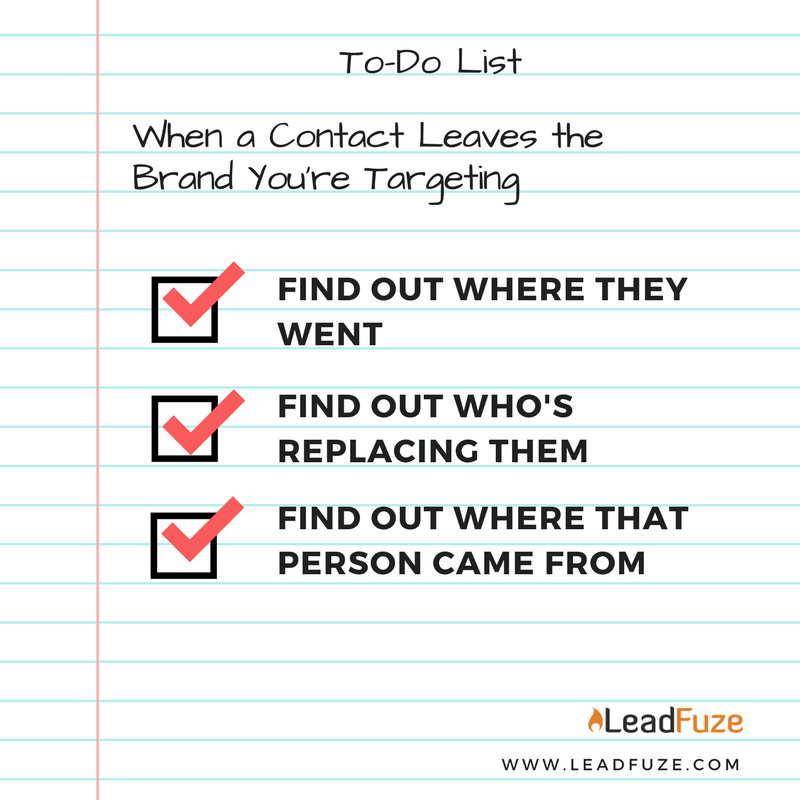
But, Just for a minute
Imagine doing this for all of your leads that leave a brand. The (hypothetical) math is encouraging.
100 leads with 25 Job Changes =
- 25 New brands with an “In”
- Another 25 Current Brands that have heard of you
- Plus, 25 New brands to cold email
So, you start with 100 and end up with 150, with little prospecting to be done. See why you need to know how to find prospects that change jobs?
To-Do List: Find Out Where Your Lead Went
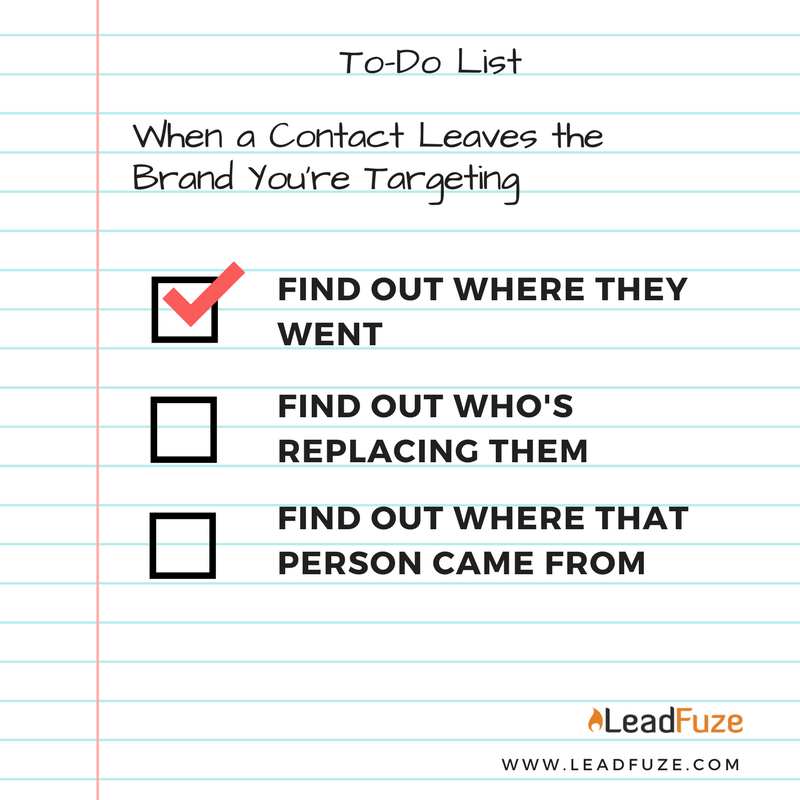
Head Over to LinkedIn and Check Your Notifications
One of the easiest places to find out where your leads went is to head over to LinkedIn (LI) and check your notifications. If you’ve been in B2B sales for more than 10 minutes, you likely know where that is, but for posterity, here’s a screenshot. Look in the upper right corner and click on “notifications”.
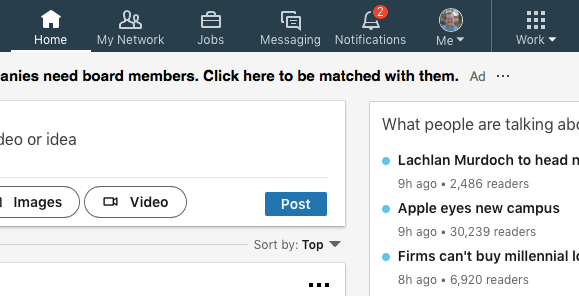
This will take you to a new screen with all of the happenings of your network.
Once you reach out to a new lead, especially when they respond (like in our scenario at the top of this post) you should reach out to connect on LinkedIn.
Key Point: Leads that respond to your outreach should be a part of your LinkedIn Network.
It should be an easy find on that screen. Look below to see some recent notifications on my own LI account. There were two in the first three results.
Leads that respond to your outreach should be a part of your LinkedIn Network.Click To Tweet 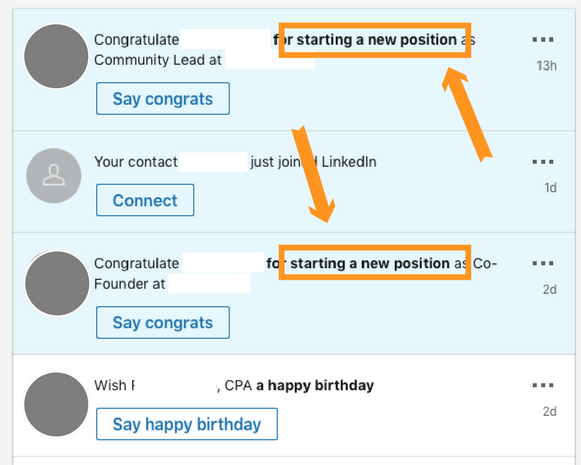
The best part, it shows where they now work. You just have to reach out to them, if their new position fits your product.
Here’s How to Get in Touch with Them
You say, “It’s been 3 months! I’ll never find it.”
Stay calm and keep scrolling. Look for your last email/phone correspondence with the lead and scroll back to that point.
Here are a few ways to reach out for the first interaction.
- Congratulate Them (Only if it’s recent): If you have to search back through 4 months of notifications, it may seem creepy to congratulate them. You troll.
- Send them a LI message: A message, on the other hand, could be quite welcome. How about: Hey, [First Name]! Saw you moved, figured I ‘d give you a (belated) congrats! You liking it at [Company Name]?
- Email Them: Not with a cold email sequence, but a message similar to the one above for LI. This would be preferred if the lead doesn’t seem active on LI.
- Call Them: If you were on a first name basis, closing in on the deal, it could be worthwhile to get them on the phone.
Now, You Can Start Selling (Almost)
Once the line of communication is open, it’s not quite go time. The person may be the same, but the business and possibly the role are different.
For example:
Laura is the Head of Marketing at McDonald’s and then becomes the VP of Marketing at Wendy’s. There are likely many similarities, but the differences could necessitate a whole new discovery conversation.
Objectives. Buying processes. Responsibilities could all be different.
The last thing you want to do is pick up exactly where you left off. Don’t treat them like a new lead, but do figure out if their pains are still the same and the use of your solution is as clear to them now as it was before.
What If You Can’t Find it On LinkedIn
Believe it or not, many professionals don’t update their profiles that regularly. Most companies will ask that decision makers proudly display where they work, others will want to show their new place of business and update it within a few weeks.
You’ll be tempted to email the person who let you know. That may not be a good idea.
Here’s why.
People Who Find Better Jobs are Happy. People Who Get Left are Often Not.
Likely, someone sent you the email letting you know that your certain someone is no longer there.
Kind of like this one I got recently;

So, given the screenshot, if I could NOT find Kim via LI, my next best chance would be to try the person who alerted me to her leaving, right? Wrong.

Warning: Most people aren’t happy that the person left. Notice in this real-life example, he says, “so I’m picking up a few of her outstanding emails.”
Kim didn’t retire. She (seemingly) left without tying up loose ends. Look for these characteristics when you are thinking about emailing the previous employer. You are risking a brand that you have a connection with if you do.
Consider yourself warned.
If they emailed and said that Kim was made an offer she couldn’t refuse and something to the effect of “we’re going to miss her” was written in the email. I MAY give it a shot.
Here’s what I’d say:
Hi Joe,
Thank you so much for letting me know! I know it’s a burden when someone leaves, sorry about that.
Kim was awesome. Do you happen to know where she’s at so I can say congratulations?
If not, no worries.
Thanks again, Joe.
Josh
Make sense? Good. Now, we’ve got to find out who’s taking there spot in the previous brand.
To-Do List: Find Out Who’s Replacing Them
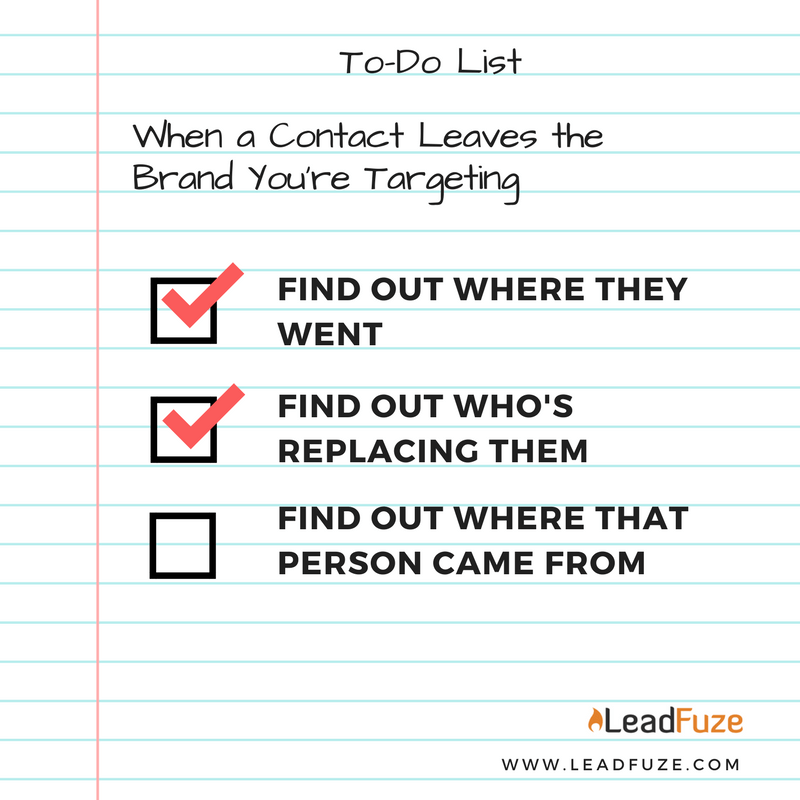
For this one, you’ll need, you guessed it — LinkedIn research.
Here are the quick steps:
- Go to your initial lead’s LI profile
- Scroll down to their work history and click on the initial brand (the one your lead worked at before).
- Click on it to be taken to the company’s LI page.
- Look for the “See all XX employees on LinkedIn” section.
- Scroll through to find the same title your lead had, or similar titles.
Here are all of those steps in the form of a gif using Rand Fishkin and Moz. Rand recently left Moz and has since started Sparktoro, which we’re excited to see happening BTW.
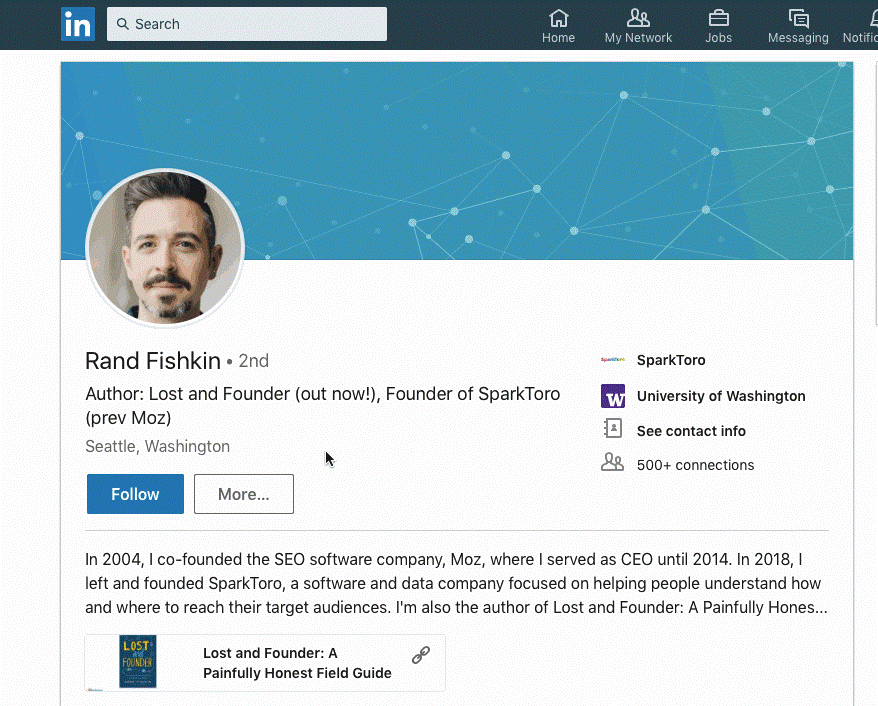
You Likely Know Their Email Already
You can then use a similar email structure to add them to your lead list and set up a personalized sequence to them.
For instance, if your previous lead’s email was j.doe@company, then your new prospect would likely be j.smith@company.
As far as the email outreach content, you’ll have to consider a few things.
- Did this person come from within the company or not?
- If so, did you interact with them?
- If not, how long have they been in the new role? Too soon may be a thing if they haven’t gotten settled yet.
Here’s a Very General Template
Subject Line: Congrats on the new role!
Hi [Name],
Wanted to say congrats on the new position! Been talking with [company name] for a while now and hope you’re settling in well.
I’m emailing because we recently created [resource name]. It’s specifically for [role] professionals in the [industry] market. Like you, [name]!
Would love to get your feedback. Let me know, [name]!
Best,
Josh
Some Quick Do-Nots
Do Not:
- Mention the previous person or your correspondence with them (except in rare cases that the new lead was an influencer that got promoted).
- Treat them as a “cold” lead. Use the fact that you have interacted with the brand without comparing your new lead with the one who left.
- Forget to follow up. Just because you have that connection, doesn’t mean they’ll email back. Follow up emails will be similar to a typical sequence.
Here’s a quick look at using LeadFuze to set up a sequence template to send out to all of the leads that take on the roles at brands you’ve already been dealing with.
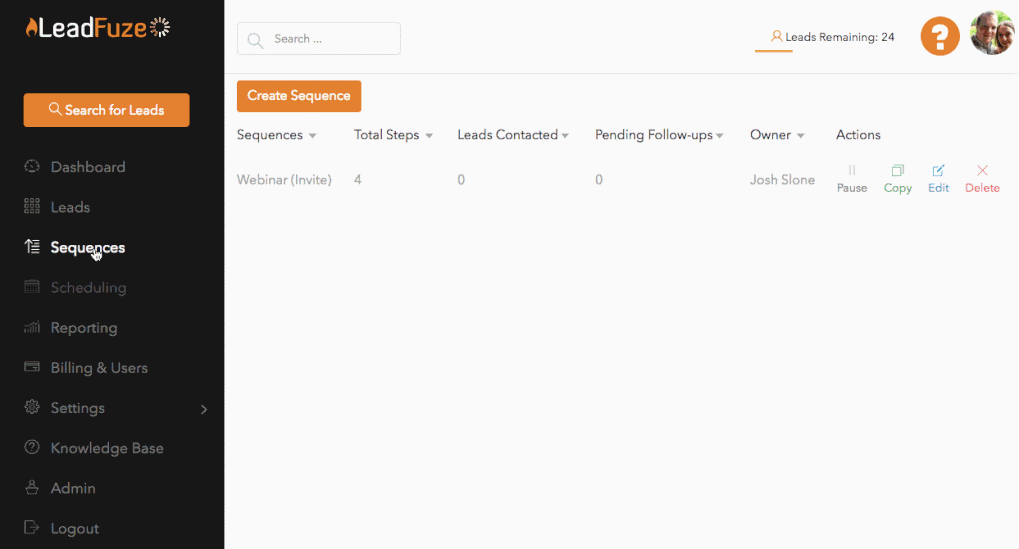
To-Do List: Find Out Where That Person Came From
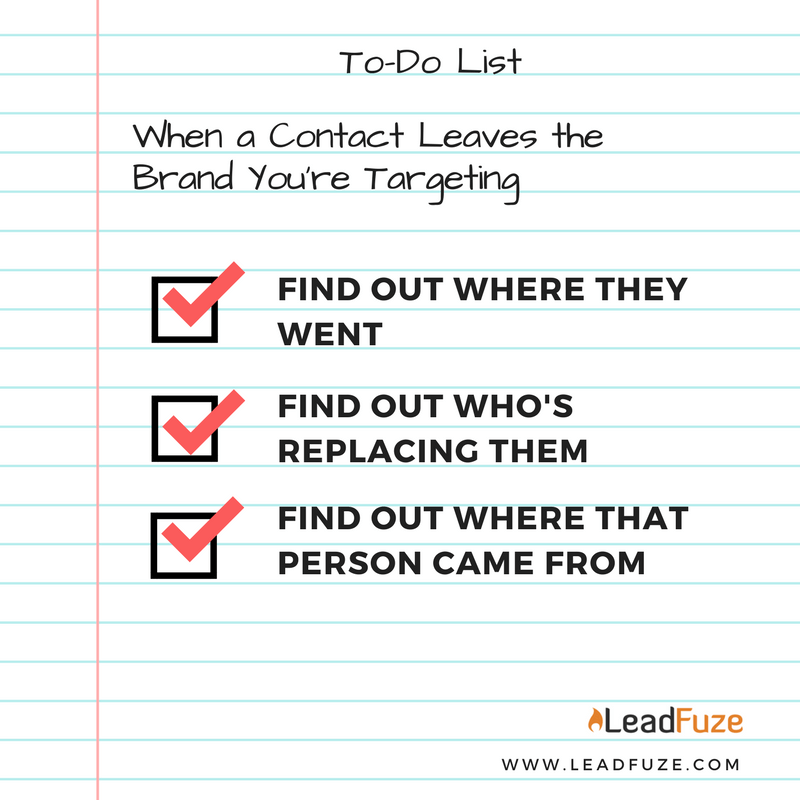
Fire up LinkedIn, because you’re going to need it. In very similar fashion to the previous step, you’ll need to start with the new person in the initial brand. So, if Jane Doe left McDonald’s to go to Wendy’s and John Smith replaced Jane — where did John come from?
Who took his place?
It may sound anti-climactic, but it’s the exact same as the last step (go back to the Rand Fishkin gif).
Reaching out to the new person is even less climatic. They’re a lead now. They weren’t and now they are. With one small difference.
You know they’re new. Here’s a slightly tweaked template from the one is the above step.
Template for New Brand/New Lead
Subject Line: Congrats on the new role!
Hi [Name],
Wanted to say congrats on the new position! I heard this position opened up and was filled and hope you’re settling in well.
I’m emailing because we recently created [resource name]. It’s specifically for [role] professionals in the [industry] market. Like you, [name]!
Would love to get your feedback. Let me know, [name]!
Best,
Josh
Again, make sure you follow the same “do nots” as above and remember to follow up with a few emails if they don’t respond to the first.
That’s it! Anything I missed? I’ll be monitoring and responding to all the comments. Know a rep who needs this? Please share if you think it will help.
Digital & Social Articles on Business 2 Community
(151)
Report Post